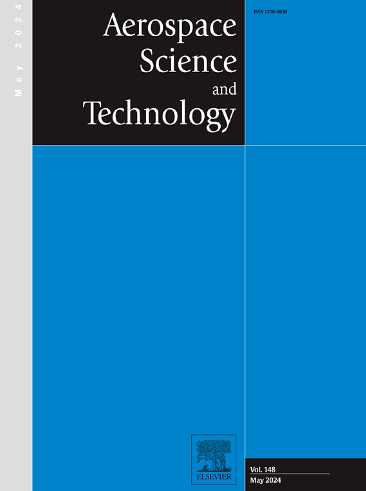Finite energy reachable set and its optimal ellipsoid approximations in relative orbital dynamics
IF 5
1区 工程技术
Q1 ENGINEERING, AEROSPACE
引用次数: 0
Abstract
To prevent distortions in estimation caused by abnormal thrust magnitudes, finite energy reachable sets are essential for estimating the maximum state range of a spacecraft during engine failures. This paper examines finite energy reachable sets defined by a combination of initial state sets and weighted energy constraints. Through rigorous mathematical proofs, it is demonstrated that the reachable boundaries form the union of several convex sets. Due to the computational complexity involved in determining the envelope of this union, which poses challenges for real-time engineering applications, an equivalent transformation of the finite energy reachable set into the Minkowski sum of the initial state gain set and the control gain set is proposed. Recognizing the lower computational power of space-grade processors compared to personal computers, this paper develops optimal trace inner and outer ellipsoid approximations of the ellipsoidal Minkowski sum, avoiding reliance on matrix eigenvalue computations through matrix analysis. The result is a significant improvement in the accuracy of the approximate solution with comparable efficiency.
相对轨道动力学中有限能量可达集及其最优椭球逼近
为了防止推力异常引起的估计失真,在发动机故障情况下,有限能量可达集是估计航天器最大状态范围的必要条件。本文研究由初始状态集和加权能量约束组合定义的有限能量可达集。通过严密的数学证明,证明了可达边界是若干凸集的并。考虑到确定该联合包络的计算复杂性,给实时工程应用带来了挑战,提出了将有限能量可达集等效转化为初始状态增益集和控制增益集的Minkowski和的方法。认识到空间级处理器与个人计算机相比计算能力较低,本文开发了椭球Minkowski和的最优轨迹内外椭球近似,通过矩阵分析避免了对矩阵特征值计算的依赖。结果是近似解的精度有了显著的提高,而且效率相当。
本文章由计算机程序翻译,如有差异,请以英文原文为准。
求助全文
约1分钟内获得全文
求助全文
来源期刊

Aerospace Science and Technology
工程技术-工程:宇航
CiteScore
10.30
自引率
28.60%
发文量
654
审稿时长
54 days
期刊介绍:
Aerospace Science and Technology publishes articles of outstanding scientific quality. Each article is reviewed by two referees. The journal welcomes papers from a wide range of countries. This journal publishes original papers, review articles and short communications related to all fields of aerospace research, fundamental and applied, potential applications of which are clearly related to:
• The design and the manufacture of aircraft, helicopters, missiles, launchers and satellites
• The control of their environment
• The study of various systems they are involved in, as supports or as targets.
Authors are invited to submit papers on new advances in the following topics to aerospace applications:
• Fluid dynamics
• Energetics and propulsion
• Materials and structures
• Flight mechanics
• Navigation, guidance and control
• Acoustics
• Optics
• Electromagnetism and radar
• Signal and image processing
• Information processing
• Data fusion
• Decision aid
• Human behaviour
• Robotics and intelligent systems
• Complex system engineering.
Etc.
 求助内容:
求助内容: 应助结果提醒方式:
应助结果提醒方式:


